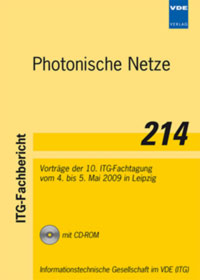An Analytical Approach to Cost Optimal Network Design
Konferenz: Photonische Netze - 10. ITG-Fachtagung
04.05.2009 - 05.05.2009 in Leipzig, Germany
Tagungsband: Photonische Netze
Seiten: 4Sprache: EnglischTyp: PDF
Persönliche VDE-Mitglieder erhalten auf diesen Artikel 10% Rabatt
Autoren:
Düser, Michael; Gladisch, Andreas (Deutsche Telekom AG, Laboratories, 10587 Berlin, Germany)
Inhalt:
The growth of the Internet and its applications is built on the success of optical transport technologies, enabling the sustained bandwidth growth observed. The advent of fibre transport in the access and aggregation networks imposes new challenges on network operators. Most networks were optimised according to the limitations of copper twisted-pair or coaxial cables, demanding stringent limits for the distances between the end user, switches and local exchanges. The high bandwidth-demand product of optical fibres allows operators to give up their old infrastructure by benefitting from unamplified transmission distances of 40+ kilometres. Multiple technologies exist to satisfy the needs, either based on a purely optical transport solution like fiber-to-the-home (FTTH), or hybrid approaches leveraging for the last mile on the existing copper infrastructure in solutions like fiber-to-the-curb (FTTB). Larger transmission distances, however, translate in a higher number of end users whose traffic needs to be terminated in the network switches and IP gateways. In this paper we present an analytical approach on identifying cost-optimal solutions for such new network architectures, stretching from the access to the core network. The large number of technological and architectural options for a network redesign renders a simulation-based approach impossible. The analytical model used here provides immediate results on the capital expenditure required for a certain architecture, taking into account transport and switching costs in the access, aggregation and core of the network. The analytical model trades accuracy in detail for tractability and understanding of the relevant effects governing overall network design. Prinipical and numerical results obtained by applying the model to a fictive Germany-wide network are presented.


